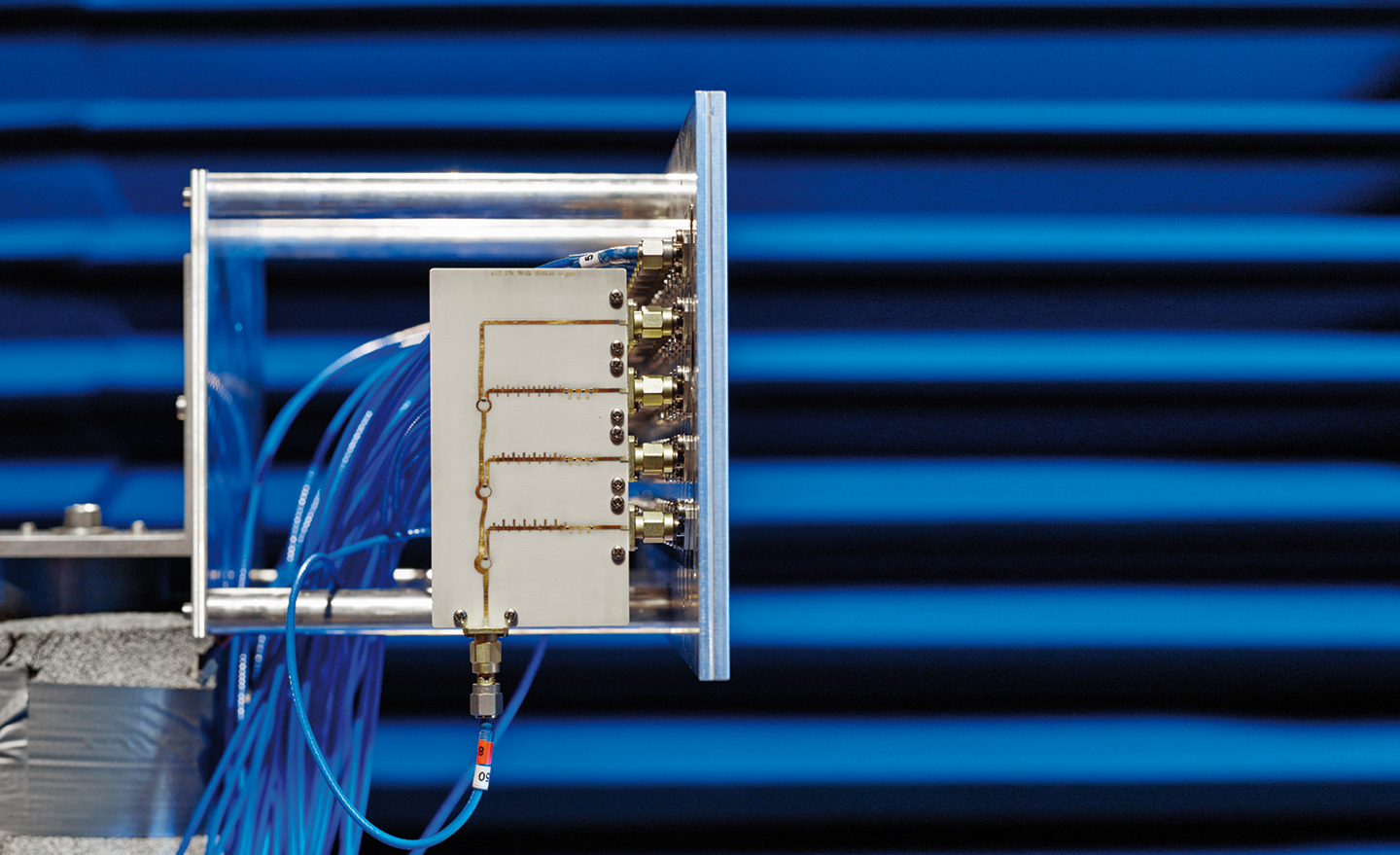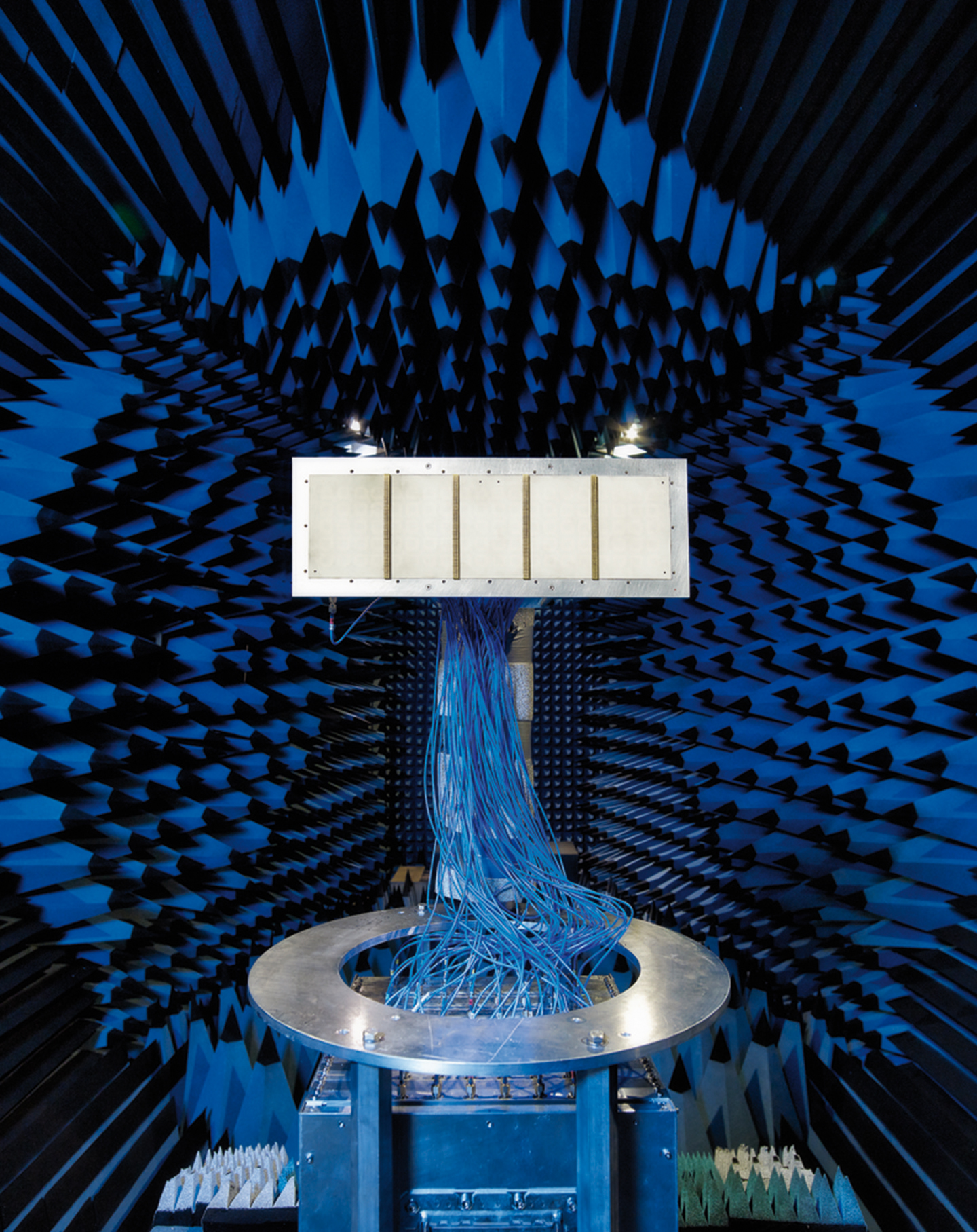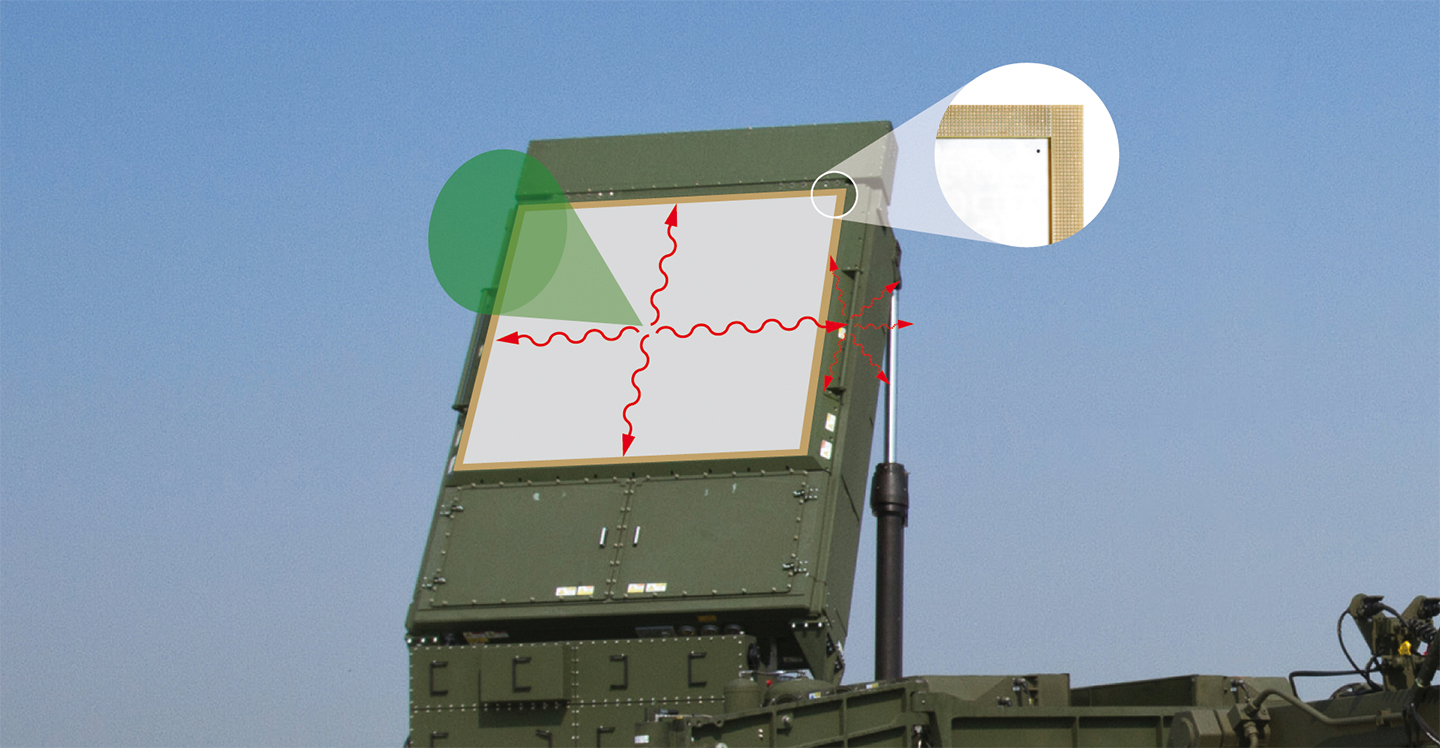Future-Oriented Metamaterials Technology



The demand for compact, reliable and cost-effective radar devices for civil and military applications will continue to grow in future years. The utilization of metamaterials can make an important contribution to the improvement of the systems.
Metamaterials (MTM) are artificial and, in most cases, periodic structures that can be created in such a way that they have properties that can not normally be found in nature. Research groups throughout the world are working to create new functionalities through the utilization of metamaterials. "Cloaking" serves as a good example here. Here, electromagnetic waves are diverted through a kind of metamaterial coating with the result that objects concealed therein appear to be invisible. The scientists at Fraunhofer FHR have already been investigating the utilization of such structures for many years, inter alia, within the framework of two studies which were commissioned by the European Defense Agency (EDA).
Long-term potential of metamaterial technology
In the EDA study "Forecasts in Metamaterials with Extreme Parameters for Disruptive Antennas, Radomes, and Cloaking in Radar Applications" (METAFORE), Fraunhofer FHR, in cooperation with international project partners, investigated the future development in the MTM area and the potential fields of application. Special attention was given to the military applications of MTM. The long-term forecasts in various areas such as RF Materials and Printed Technology, Transformation Optics or Graphene-based Metamaterials were used to identify a large number of promising projects for the next two decades. Despite the uncertainty of long-term forecasts, numerous potential applications were identified with the result that MTM will continue to play an important role in the area of research and development.
Phase compensation lines
In a further EDA project "Metamaterials for Active Electronically Scanned Arrays" (METALESA), Fraunhofer FHR developed, among other things, an MTM high-frequency feed network for phase-controlled antenna arrays. The traditional approach of a feed network, which must guarantee in-phase excitation of the antenna elements, is based on a binary tree structure. Depending on the number of antenna elements, this can require a lot of space. A serial feed network, on the other hand, only needs one distribution level but does, however - in its conventional design (e.g. due to the waveguide) – have the disadvantage that the propagation times to the antenna elements are different. MTM lines are used to realize an innovative, phase stable, serial feed network (Fig. 1). This requires the use of so-called left-handed lines. In these lines, wave propagation and power transport take place in opposite directions. In this way, the phase displacement of an arm of the feed network can be compensated with a corresponding MTM line. The result is a feed network that is clearly more compact than corresponding parallel versions.
Suppression of parasitic waves
Surface waves, which can cause unwanted radiation and reduce the efficiency of the system, can propagate on the surface of active antenna arrays. The change in the coupling of adjacent antenna elements was investigated (Fig. 2) in a further work package of the METALESA project and the unwanted side and rear radiation was reduced (Fig. 3). The solution realized by Fraunhofer FHR is based on a so-called electromagnetic bandgap (EBG) structure. This prevents the propagation of electromagnetic waves of a certain frequency band, which is determined by the geometry and dimensions of this periodic structure. For this purpose, a special EBG frame was developed, the bandgap of which includes the frequency range of the antenna. Here, the suppression of parasite waves is achieved with an arrangement that can be produced cost-effectively. This additional measure only leads to minimal increase in the overall surface of the antenna aperture. This technique can be used in the construction of new radar antennas or in the retrofitting of existing systems.
Further application areas in which metamaterials can be used in future in radar or communication systems were also identified through the successful cooperation within the framework of the EDA assignments. Hence, the potential of this interesting technology is still a long way from being exploited.